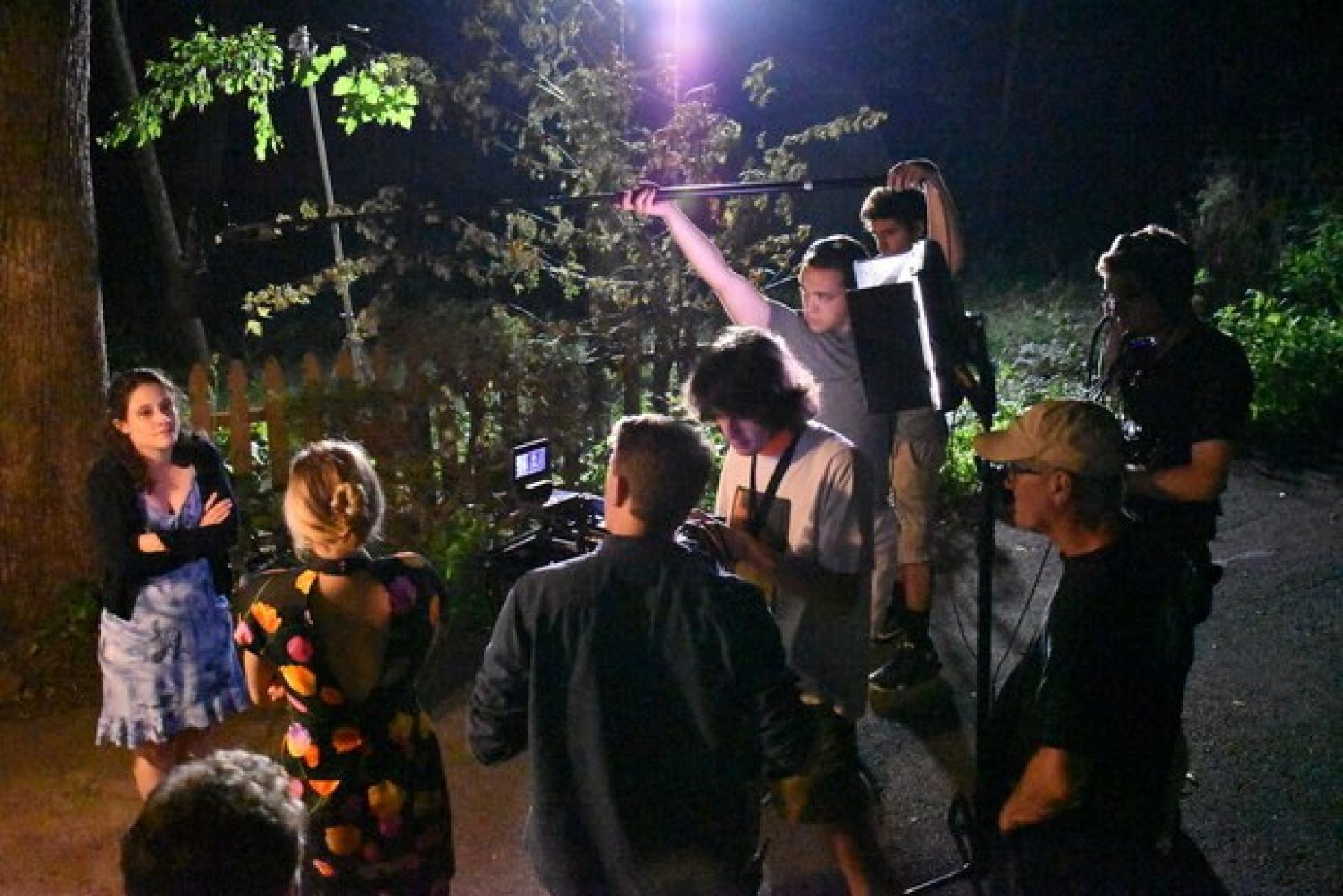Long-term Collaboration
Husband-and-wife team enjoys success

For Maura Shea and Rod Bingaman, teaching film together at Penn State makes perfect sense. The husband-and-wife team has been collaborating for roughly 30 years.
They met in grad school at Boston University in 1988. Bingaman was working a summer job, fielding calls from would-be students, when Shea phoned to ask about applying to the film program.
“He talked me into it,” she says.
“I was incredibly charming in those days,” he replies.
After earning their master’s degrees, the couple remained in New England, making ends meet by working on commercials, TV shows, documentaries and feature films. Shea leaned toward video and sound editing. Bingaman said yes to almost everything — writing, editing, directing. If someone needed a cameraman, he did it. He even worked in a post-production print shop. “I owed them $500,” he says.
Shea edited segments for “Sesame Street” and served as a sound editor on the PBS documentary “Malcolm X: Make It Plain,” which won a Peabody Award in 1994. Bingaman’s credits include “Mermaids,” “Mystic Pizza” and “Witches of Eastwick.”
Eventually, though, Shea grew weary of the chaos of freelance life. In 1996, a job posting at Penn State caught her attention. The communications program was looking for a sub for a professor on sabbatical, an adjunct who could teach students the new AVID editing system Shea had just mastered. “They hired me for a year,” she says. “So we decided to pack up and move, see where it led. We never left.”
For the first few months in State College, Bingaman continued to work with a Boston director on an editing project. And then, in a span of three days, he got three offers to teach classes at Penn State, too. “Just like that, I had a full-time gig,” he says.
But the couple never quite lost their love for making movies. As he walked the campus and nearby streets, admiring the local architecture, Bingaman found himself drifting back in time, dreaming up screwball comedies and other period pieces.
In 1999, the duo launched Ma & Pa Pictures, with the grand vision of creating large-scale collaborations involving students, faculty members, townspeople and professional actors. Think of it like a master class in feature-length filmmaking.
Their first production — an urban comedy called “A Holiday Affair” — was released in 2000 and received the Audience Award for Best Feature Film at the Brooklyn Film Festival. It was followed by the 1930s period film “Hooray for Mr. Touchdown” in 2004, the roadtrip movie “Chasing Butterflies” in 2008 and the 1960s sci-fi musical “Ripped!” (available for streaming on Amazon Prime) in 2011.
Their fifth film — a Rip Van Winkle-style, time-travel tale called “Spooky Action” — is due out in the summer of 2021.
Bingaman writes and directs the films, leaving Shea to manage the $100,000 budgets. The couple borrows equipment from the Bellisario College and costumes from the University’s theatre department, scouring eBay for props and accessories and the greater Centre County area for locations. They do the filming in the summer so as not to intrude on student productions, using actors imported from New York and Los Angeles.
Shea plays a significant role in bringing Bingaman’s visions to life, always looking for creative ways to stretch the funds. “When Rod originally wrote the script for ‘Ripped,’ the 1967 space musical, there were five guys in the band,” she says. “As the producer, I said, ‘Can we live with four?’ And he said, ‘Yes.’”
The team’s productions foster a deep appreciation for the rich history of Penn State’s campus. The duo has scouted Rec Hall, the dorms in West Halls, the Ihlseng Cottage, even an old vegetable cellar across the street from Eisenhower Auditorium for their films. “There’s no building I haven’t been in,” says Bingaman. That includes talking his way onto the roof of Willard Building for a 35-minute shoot for “Hooray for Mr. Touchdown.”
“That’s all they’d give us,” he says. “So we just rehearsed, rehearsed, rehearsed.”
Days before State College High ripped up the grass at historic Memorial Field to lay down astroturf, Bingaman and Shea were there with cast and crew. “It cost $200 to line the field, in case you’re interested,” she says.
As you might imagine, the home where the couple raised their two daughters now houses a prodigious prop collection, not to mention a library of old-fashioned sound effects (revving car engines, ringing telephones, etc.). “The students are always like, ‘Do you have one of these?’” says Shea. “And I’m like,
‘Actually, I do!’”
Penn State’s film program has grown quite a bit, too. It’s now as well-equipped as any film school in the country, including a state-of-the-art digital editing lab paid for by the noted TV and film producer Carmen Finestra. “When you have those tools, you can ask students to do more,” Bingaman says. And the students certainly have risen to the task — due in part to the explosion of video in youth culture. “We went through a phase where camcorders were real popular,” he explains. “Now everybody’s shooting with DSLRs — real cameras. All those photo skills you didn’t really emphasize much for seven, eight years are now really important again.”

